One of the things I love about Virginia Lee Burton's book The Little House is the dancing apple trees that surround it. Supporting a rope swing and, often, clambering children in their branches, the trees are an indicator of the health of the environment around the little house as the city springs up and the house declines. In its grimmest days, there are no trees at all.
At the end of the book, as the house settles into its new location, it's once again circled by Burton's graceful trees.
Trees are a recurring motif in Burton's other work, so as a way of highlighting a part of nature she clearly loved, as well as her artistic achievements, I thought I would showcase a few of her trees.
These four were done for a Horn Book calendar in 1965, a few years before her death. (Scans from Barbara Elleman's Virginia Lee Burton: A Life in Art.)
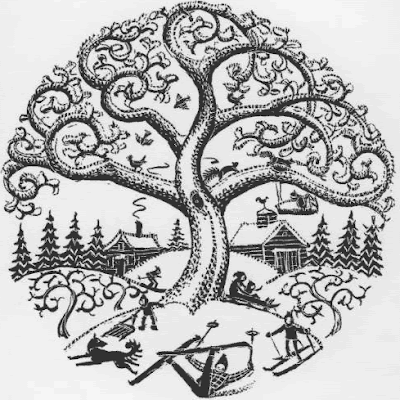
February
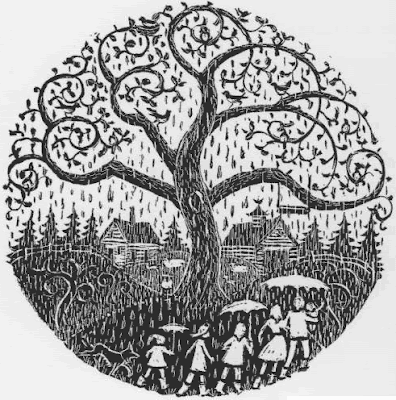
April
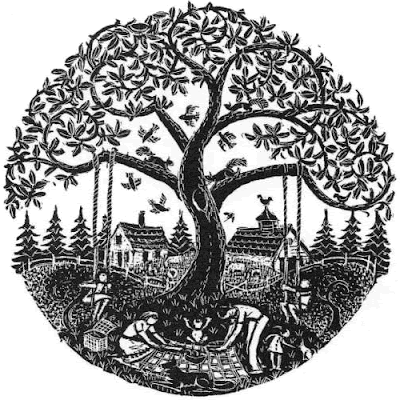
June
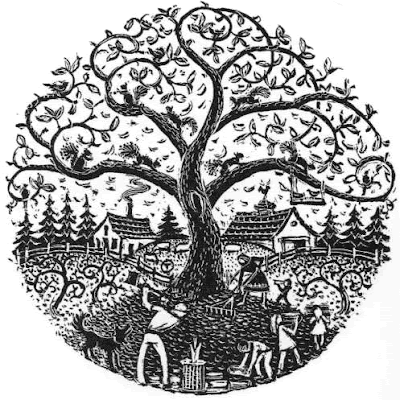
November
The Song of Robin Hood (1947), edited by Anne Malcolmson with illustrations by Burton, is almost overwhelming in its visual complexity. It's a book you could return to over and over again, finding new things to look at each time.
The scratch board illustrations were reproduced in only black ink, and vary from tiny, detailed scenes that accompany capital letters to full-page renderings of Robin Hood in his various exploits. In many ways, the book is reminiscent of William Morris's work, clearly emphasizing Burton's felt connection to the Arts and Crafts movement.
And given that the story takes place in Sherwood Forest, there are trees everywhere.
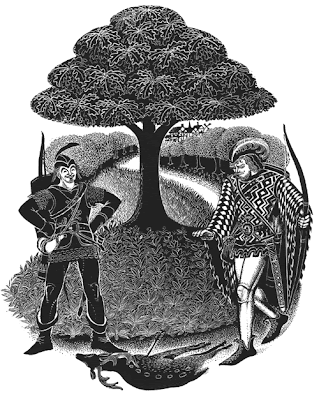
An oak from Robin Hood and the Stranger.
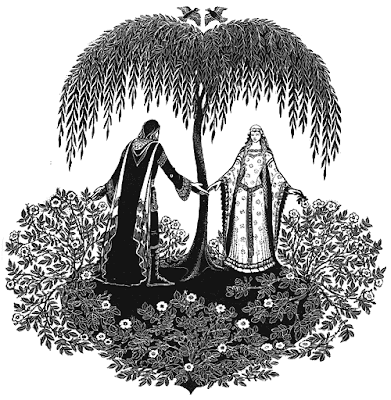
Robin Hood and Maid Marian under a willow.
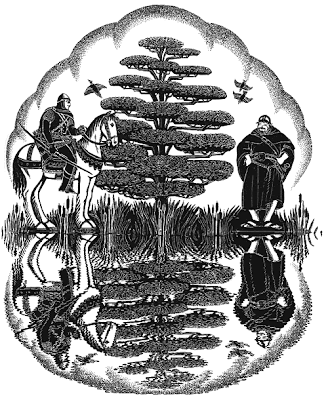
A stylized, multi-layered tree, with an amazing reflection from Robin Hood and the Curtal Friar.

A conifer from Robin Hood's Death.

Probably my favorite. From Robin Hood Rescuing Three Squires.
Finally, a scratch board illustration of the Swing Tree from Virginia Lee Burton's home in Folly Cove, Gloucester, Massachusetts. According to Elleman, this tree "appeared in various forms throughout her work." (Reproduced from Elleman's book, where it appeared courtesy of the Cape Ann Historical Association.)
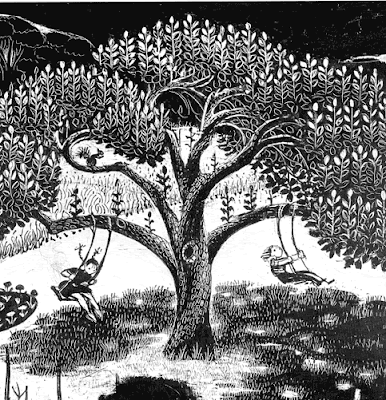
Part 3 of Virginia Lee Burton week on Daughter Number Three.
Tuesday, June 23, 2009
Virginia Lee Burton Speaks for the Trees
Posted at
6:06 PM
![]()
![]()
Categories: Art, Books, Reading YA
Subscribe to:
Post Comments (Atom)


1 comment:
wow, these are fantastic!
Post a Comment